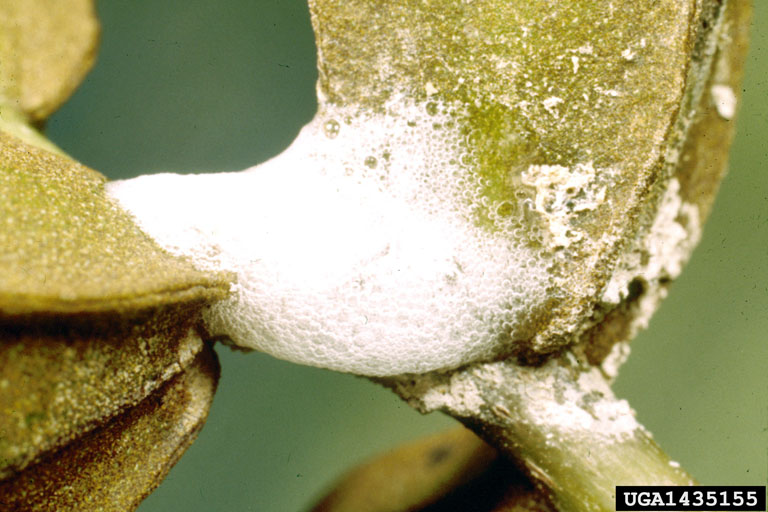ERROR : Server Busy(-1105)
ERROR : Server Busy(-1105)
Pecan Spittlebug (Clastoptera achatina)
pecan spittlebug
Insecta (Hexapoda) > Hemiptera > Cercopidae
Clastoptera achatina Germar
Photographer: Clemson University - USDA Cooperative Extension Slide Series,
Descriptor: Nymph(s)
Description: white, frothlike mass of spittle produced by the immature nymphs
Image Citation:
Clemson University - USDA Cooperative Extension Slide Series, , www.forestryimages.org
Image Use:
This image may be copied and used, in whole or in part, for any non-profit, educational purpose provided that all reproductions bear an appropriate credit. Any commercial or other use of the image requires the written permission of the photographer or contact organization, and Forestry Images. |

